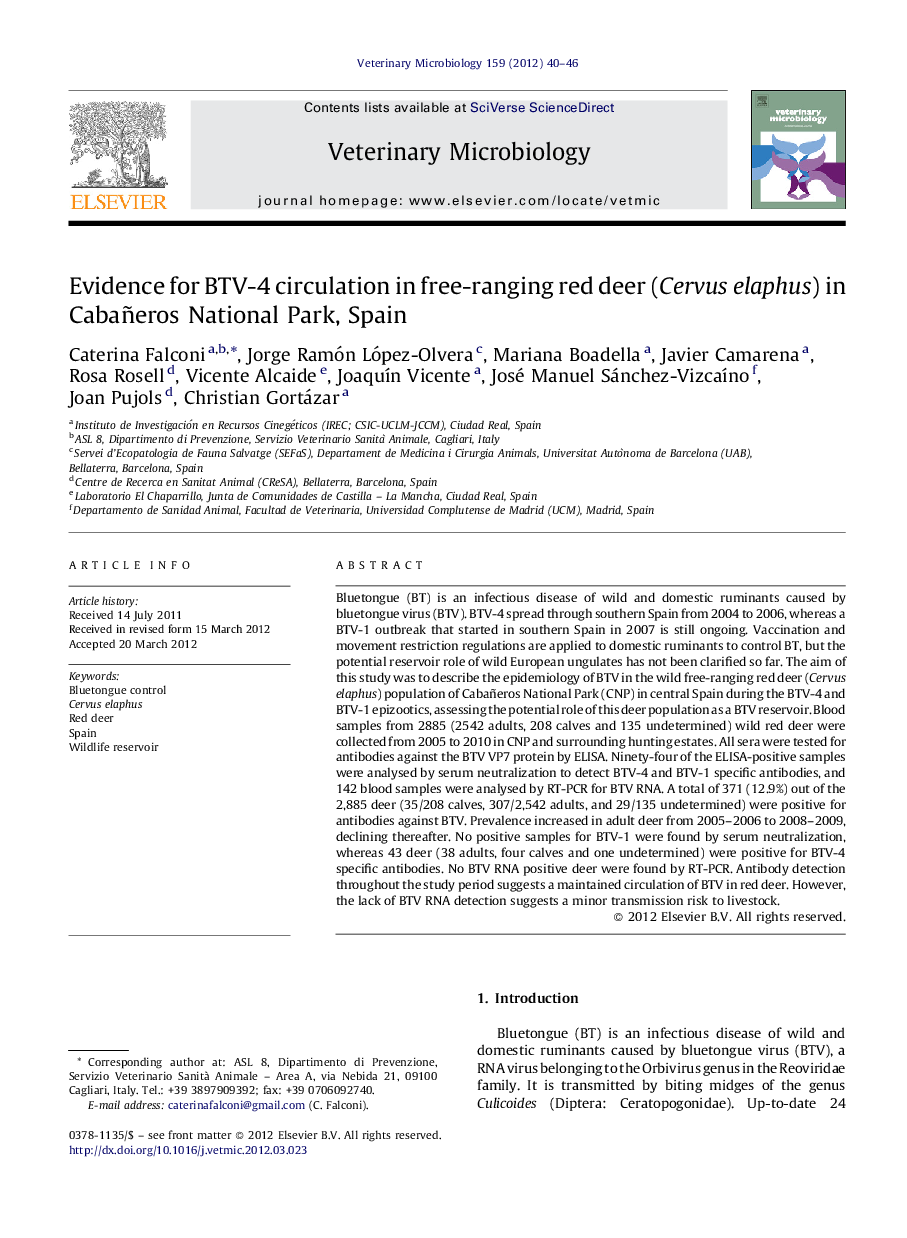| Article ID | Journal | Published Year | Pages | File Type |
|---|---|---|---|---|
| 2467057 | Veterinary Microbiology | 2012 | 7 Pages |
Bluetongue (BT) is an infectious disease of wild and domestic ruminants caused by bluetongue virus (BTV). BTV-4 spread through southern Spain from 2004 to 2006, whereas a BTV-1 outbreak that started in southern Spain in 2007 is still ongoing. Vaccination and movement restriction regulations are applied to domestic ruminants to control BT, but the potential reservoir role of wild European ungulates has not been clarified so far. The aim of this study was to describe the epidemiology of BTV in the wild free-ranging red deer (Cervus elaphus) population of Cabañeros National Park (CNP) in central Spain during the BTV-4 and BTV-1 epizootics, assessing the potential role of this deer population as a BTV reservoir. Blood samples from 2885 (2542 adults, 208 calves and 135 undetermined) wild red deer were collected from 2005 to 2010 in CNP and surrounding hunting estates. All sera were tested for antibodies against the BTV VP7 protein by ELISA. Ninety-four of the ELISA-positive samples were analysed by serum neutralization to detect BTV-4 and BTV-1 specific antibodies, and 142 blood samples were analysed by RT-PCR for BTV RNA. A total of 371 (12.9%) out of the 2,885 deer (35/208 calves, 307/2,542 adults, and 29/135 undetermined) were positive for antibodies against BTV. Prevalence increased in adult deer from 2005–2006 to 2008–2009, declining thereafter. No positive samples for BTV-1 were found by serum neutralization, whereas 43 deer (38 adults, four calves and one undetermined) were positive for BTV-4 specific antibodies. No BTV RNA positive deer were found by RT-PCR. Antibody detection throughout the study period suggests a maintained circulation of BTV in red deer. However, the lack of BTV RNA detection suggests a minor transmission risk to livestock.
